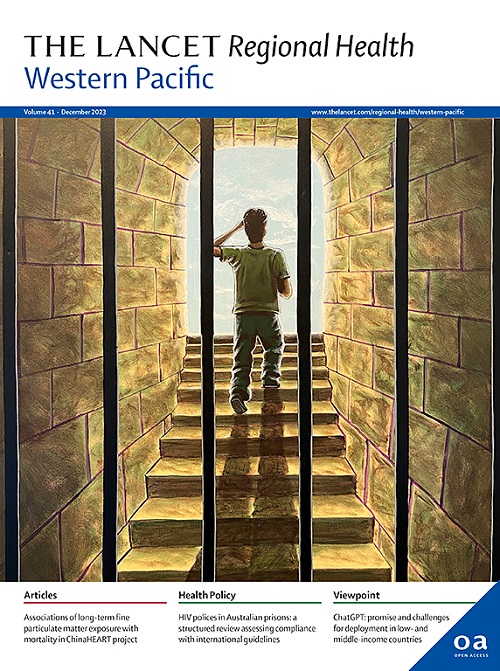Trends of lipid-lowering drug utilization, treatment intensity and LDL-C target attainment in adults with diabetes and non-dialysis chronic kidney disease in Hong Kong
IF 8.1
1区 医学
Q1 HEALTH CARE SCIENCES & SERVICES
引用次数: 0
Abstract
Background
With evolving treatment targets, concerns over renal safety for some statins and new lipid-lowering drugs (LLDs), we aimed to evaluate the trends of statins and non-statin LLDs [ezetimibe, and proprotein convertase subtilisin/kexin type 9 inhibitors (PCSK9i)] utilization in individuals with diabetes and non-dialysis chronic kidney disease (CKD) in Hong Kong.
Methods
We conducted a retrospective cohort study of 332,975 Chinese individuals with diabetes and non-dialysis CKD using data from Hong Kong Hospital Authority in 2002–2019. We analyzed the annual average dosage, treatment intensity (low-intensity: <30% Low density lipoprotein-cholesterol (LDL-C) reduction; moderate-intensity: 30%–49%; high-intensity: ≥50%) and attained LDL-C targets defined by annual average LDL-C value. We evaluated the age-sex standardized trends of statin and common non-statin LLD use for primary and secondary prevention across age, sex and CKD stages.
Findings
Statin-users increased from 17.6% in 2002 to 71.3% in 2019 with similar trends across age, sex and CKD stages G3–5 except for the 18–49 age group having the highest proportion of non-users of LLD (39%). By 2019, the usage of ezetimibe (1.19%) and PCSK9i (0.01%) remained low. Amongst statin-users, 27.2% received moderate-intensity therapy for primary prevention and 11.2% received high-intensity therapy for secondary prevention. In 2019, 33.3% of LLD-users achieved LDL-C < 1.8 mmol/L for primary prevention and 21.3% achieved LDL-C < 1.4 mmol/L for secondary prevention.
Interpretation
Despite the increasing use of statins, treatment gaps remain with respect to treatment intensity and LDL-C target attainment in diabetes and non-dialysis CKD calling for increased use of combination statin and ezetimibe or PCSK9i to close the treatment gaps.
Funding
Dr. Aimin Yang was supported by a CUHK Impact Research Fellowship Scheme.
香港成人糖尿病及非透析慢性肾病患者的降脂药物使用趋势、治疗强度及LDL-C达标情况
背景:随着治疗靶点的不断变化,一些他汀类药物和新型降脂药物(LLDs)对肾脏安全性的担忧,我们旨在评估他汀类药物和非他汀类药物(依zetimibe和蛋白转化酶枯草菌素/克辛蛋白9型抑制剂(PCSK9i))在香港糖尿病和非透析慢性肾脏疾病(CKD)患者中的使用趋势。方法:采用香港医院管理局2002-2019年的数据,对332,975名中国糖尿病和非透析慢性肾病患者进行回顾性队列研究。我们分析了年平均剂量,治疗强度(低强度:30%低密度脂蛋白-胆固醇(LDL-C)降低;中等强度:30% - -49%;高强度:≥50%),达到年平均LDL-C值定义的LDL-C目标。我们评估了他汀类药物和非他汀类LLD在不同年龄、性别和CKD阶段用于一级和二级预防的年龄-性别标准化趋势。他汀类药物使用者从2002年的17.6%增加到2019年的71.3%,除18-49岁年龄组非LLD使用者比例最高(39%)外,不同年龄、性别和CKD阶段的趋势相似。到2019年,依折麦布(1.19%)和PCSK9i(0.01%)的使用率仍然较低。在他汀类药物使用者中,27.2%接受中等强度一级预防治疗,11.2%接受高强度二级预防治疗。2019年,33.3%的低密度脂蛋白使用者一级预防LDL-C达到1.8 mmol/L,二级预防LDL-C达到1.4 mmol/L。解释:尽管他汀类药物的使用越来越多,但在糖尿病和非透析性慢性肾病的治疗强度和LDL-C目标实现方面,治疗差距仍然存在,需要增加他汀类药物和依泽可布或PCSK9i的联合使用,以缩小治疗差距。杨爱民获中大影响力研究奖学金资助。
本文章由计算机程序翻译,如有差异,请以英文原文为准。
求助全文
约1分钟内获得全文
求助全文
来源期刊

The Lancet Regional Health: Western Pacific
Medicine-Pediatrics, Perinatology and Child Health
CiteScore
8.80
自引率
2.80%
发文量
305
审稿时长
11 weeks
期刊介绍:
The Lancet Regional Health – Western Pacific, a gold open access journal, is an integral part of The Lancet's global initiative advocating for healthcare quality and access worldwide. It aims to advance clinical practice and health policy in the Western Pacific region, contributing to enhanced health outcomes. The journal publishes high-quality original research shedding light on clinical practice and health policy in the region. It also includes reviews, commentaries, and opinion pieces covering diverse regional health topics, such as infectious diseases, non-communicable diseases, child and adolescent health, maternal and reproductive health, aging health, mental health, the health workforce and systems, and health policy.
 求助内容:
求助内容: 应助结果提醒方式:
应助结果提醒方式:


